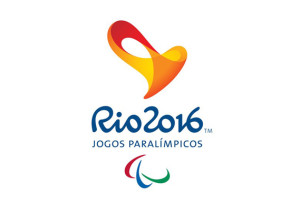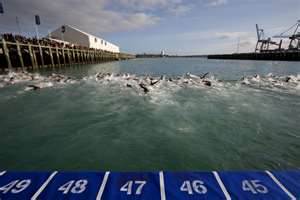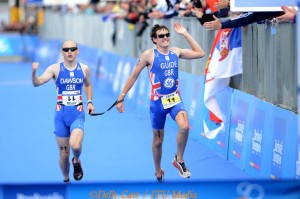For most of us triathletes the season is now over. Sure there are a few die-hards still out there racing seriously, but i’m not one of them (Surprising, I know). September’s World Championships in London seem almost a distant memory…I’ve had my end of season break and i’m now easing into winter training!
What exactly I’m training for however is a little unclear at this point.
You see, we are waiting on a decision from the International Paralympic Committee (IPC) about which categories will be included for the Rio 2016 Paralympic Games triathlon event. Currently the International Triathlon Union (ITU) use 7 categories whilst there are likely be only 3 in Rio. This gives a maximum of 6 sets of medals to be won between the male and female competitors – with a possible total of just 60 spaces on the start line.
Added to this, the classification system – a method for grouping athletes with similar impairments/limitations together for competition (see this A-Z guide by BBC Sport showing how it works in other sports) is currently under review and likely to look very different for next season. Most athletes, I guess, will have to be reclassified with the outcome of this process anyone’s guess. It might be positive for some and perhaps the end of the Paralympic dream for others…Whilst acknowledging it’s an impossible task for all involved let’s just hope the ITU come up with a system that is as sensible, fair and objective as it can be. I’m sure this will be what they are aiming for.
This all creates a degree of uncertainty however. Until things are clearer, athletes like myself will be unsure of their place within the national team and whether funding/support will be available as this is linked very closely to Rio 2016. Current and future sponsorship arrangements might also be affected by these decisions, although I’m lucky to have some brilliant sponsors.
Furthermore the actual competition rules are always under review. I wouldn’t like to predict anything whatsoever on this subject either after the changes introduced this year! Looking back at 2013 perhaps shows how significant rule changes can be in what is a rapidly developing sport. For example in my category alone there were three major differences this season: –
1. Visually impaired competitors are now split into two categories: Tri6a for the B1 (Blind) athletes and Tri6b for the B2/3 (Partially sighted athletes.
2. We are no longer permitted to draft behind our guide in the swim and are now required to swim alongside them instead.
3. We don’t have to run in blackout glasses anymore.
Were these changes a good thing? Well, yes and No. Personally speaking it was a mixed bag.
On the surface splitting the category seems like a good idea. I doubt anyone really wants to win unfairly, or to put it another way because they have better eyesight than a fellow competitor. You want to win because you are the better athlete! I’m not 100% sure the sport was quite ready for this change however. I say this because I wonder if the number of athletes in most events (except the World championships and maybe the Europeans) warrants it. On the other hand you could argue that such a change encourages more B1 athletes to get involved which can only be a good. Secondly I have concerns that some athletes may be wrongly classified due to the relative weakness of the current system used in triathlon for Tri6 athletes. It’s been suggested to me that one solution is for athlete in Tri6a to wear blackout goggles/glasses for the duration of the event. Thirdly, this is likely to be a prelude to the introduction of a ‘factor system’. This is a mathematical calculation used to calculate the likely difference in the ability of athletes from different classifications when competing in a combined-class medal event. The trouble with this is that any factors used would be unlikely to provide a ‘fair’ reflection of the differences between a B1 and a B2/3 athletes. Yes, it might be possible to say a B2/3 athlete is X amount quicker than a B1 athlete over the course of a triathlon or specific parts of the race, but no-one has (or perhaps will?) quantified the proportion of any differences in speed associated solely with level of impairment. You can’t really separate this out from other things such as training, coaching genetics, equipment, quality of the guide, adaptive skills etc. Whilst I’m not sure about this new system (or what might follow!) I know lots of people are in favour of it which is fair enough. It’s perhaps better than no race at all.
When it comes to the swim rule change I’m again a bit 50-50. I think it’s good in the sense that it stops people just being towed around by their guide, which in my view isn’t really the idea. On the other hand swimming behind the guide can give you an awful lot more directional information by tapping the guides feet, feeling the rope and through proprioceptive feedback of the water turbulence etc. It was easier to navigate around buoys and manoeuvre away from trouble if needed. Generally it seemed faster which is always good! I think I’ve adapted to this change pretty well and have done some decent swims this year, but I do wonder why the ITU didn’t just allow front-to-back swimming with a really stretchy tether that had to be attached ankle to ankle…
As an athlete with some useable sight that I have adapted to, I’m not surprisingly pretty happy that the blackout glasses are no more. It was difficult having you’re sight suddenly taken away just before starting to run, causing balance and co-ordination issues at times. It generally felt quite dangerous too; despite having some great guides i’ve still ben splattered into a water handler, metal gate and a lamp post! I did manage to adapt to using them fairly well with practise and even ran some of my fastest 5k’s this way when the courses were safe. As the courses should be safe for all including those with little or no sight, it really renders the blackouts a little pointless at times. It was great (and a bit weird) to see a little of the run courses and the finish lines in 2013 after 3 years of being in the dark! It’s just a shame this wash’t the case last year in New Zealand when Luke and I took the World title or indeed during 2010 when Matt and I triumphed in Budapest…it did add to the challenge though. Undoubtedly a change for the better I think.
So for now we just have to train well over the winter and sit tight I guess 😉
Iain



